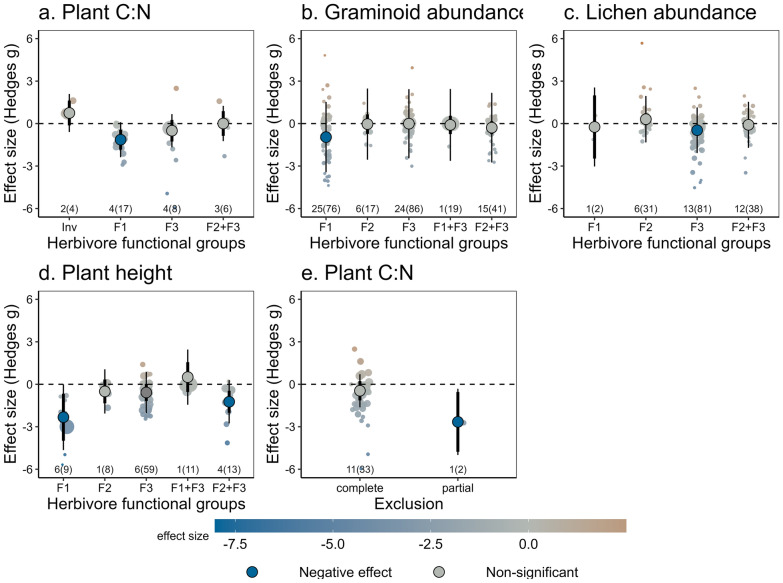Fig. 6.
The impact of herbivore diversity on plant C:N ratio, graminoid and lichen abundance, and plant height was modulated by the identity of herbivore functional groups (a–d) or the partial exclusion of herbivores (e). Functional groups of herbivores were defined by [5] and represent: F1 limnic-habitat associated herbivores, migrating outside the Arctic in winter, with undifferentiated guts and feeding mainly on graminoids (waterfowl; paragon Anser anser); F2 immobile, burrowing species with hindgut fermenting digestive physiology (paragon Synaptomys borealis); F3 large-bodied facultative-generalist species for which shrubs and lichens are an important diet component (paragon Lepus timidus); and Inv for invertebrates. Exclusion refers to studies where all herbivores (complete exclusion) or only some groups of herbivores (partial exclusion) are removed. Circles represent overall effect sizes with colour indicating the magnitude of the effect. Thin lines represent prediction intervals and thicker lines (often hidden behind the overall effect size) represent confidence intervals. Significance of the effect, as per the meta-regression models, is indicated with darker colours. The number of articles and studies (in brackets) are indicated in small font; note the small sample sizes for some levels of variables

